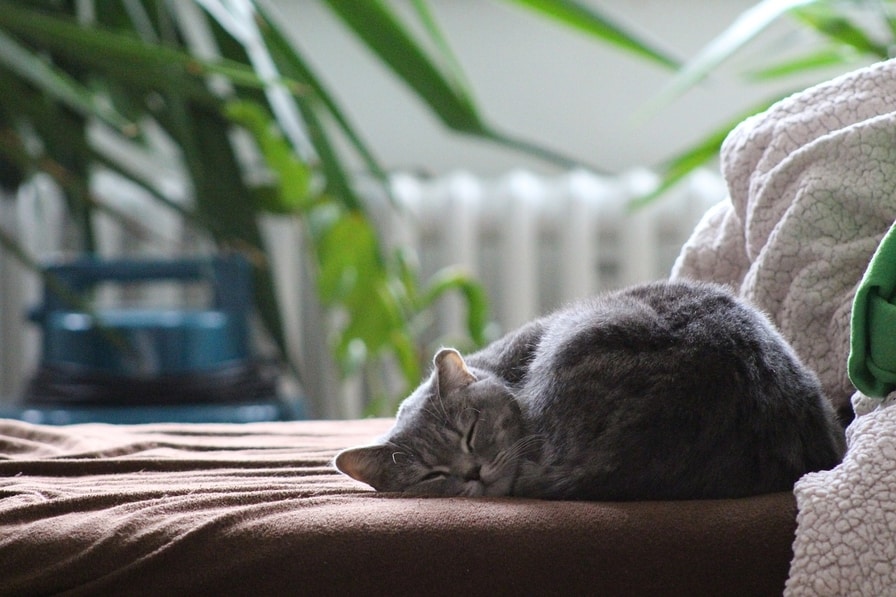Do you know what is Hemophilia B in British Shorthairs (BSH)? It’s a bleeding disorder that can cause excessive bleeding in cats.
British Shorthairs are especially prone to it, so if you’re the owner of one of these adorable felines, it’s important to be aware of the signs and symptoms.
In this post, we’ll take a closer look at Hemophilia B in British Shorthairs and teach you how to protect your kitty from this condition.
What is Hemophilia B In BSH?
Hemophilia B is a bleeding disorder that results from a deficiency in Factor IX, a clotting protein. This means that the blood doesn’t clot properly, which can lead to excessive bleeding. In cats, Hemophilia B is most commonly caused by a genetic defect. British Shorthairs are especially prone to this condition, so it’s important to be aware of the signs and symptoms.
Signs And Symptoms
The most common sign of Hemophilia B is excessive swelling and bruising under the skin. Cats may also experience loss of appetite, fever, and depression.
More severe symptoms include bleeding from the rectum or genitals and blood present in stools and vomit.
If you suspect that your cat has it, it’s important to take him to the vet right away for diagnosis and treatment.
The Severity
There are three different severities of Hemophilia B in cats. Cats with less than 1% Factor IX are considered to have extreme Hemophilia, while those with <5% Factor IX are considered to have severe Hemophilia.
Cats with more than 25% Factor IX are considered to have adequate amounts of Factor IX. However, the condition may be discovered after they undergo surgery.
Cats with extreme Hemophilia usually die at birth or live very short lives.
Those with severe symptoms usually suffer bouts of spontaneous bleeding and most likely die from anemia or blood loss.
If you’re looking into this disease, it’s likely that your cat has either severe or adequate amounts of Factor IX.
How Is It Diagnosed
There are multiple tests a vet may perform in order to determine if a cat has Hemophilia.
Some of these diagnostic tests include in vivo bleeding time, coagulation assays, prothrombin time, thrombin clotting time, and fibrinogen determination. (Source)
What Is The Treatment
Fortunately, there is treatment available for it. The vet will likely perform a blood transfusion containing fresh frozen plasma.
It’s important to administer this treatment on time and as directed, or else your cat may experience more bleeding.
If the bleeding is internal, the results often go unnoticed until a crisis happens.
Taking Care Of Your Cat
As the owner of a British Shorthair with this disease, there are a few things you can do to help keep your cat healthy.
- Keep a close eye on your cat for signs of bleeding and take him to the vet immediately if you notice any.
- Make sure to administer the treatment as directed by the vet.
- Keep your cat’s environment calm and stress-free. Loud noises or sudden movements can cause excessive bleeding in cats with Hemophilia B.
- Feed your cat a high-quality diet and provide plenty of fresh water.
- Avoid letting your cat play rough with other animals, as this can lead to injury and further bleeding.
- Regular vet checkups are essential for a cat.
Life Expectancy
The life expectancy varies depending on the severity of the condition.
Cats with extreme or severe Hemophilia generally don’t live very long, while those with adequate proteins may live for several years.
It’s important to work closely with your vet to ensure that your cat receives the best possible care.
How Common Is It?
Hemophilia is a rare condition in cats. The actual prevalence is unknown, but it’s more common in BSH.
Why Is It Called Christmas?
The name Christmas is derived from the fact that the first person to be diagnosed with the condition in 1952 was a man named Stephen Christmas.
Other Common BSH Health Issues
British Shorthairs are prone to a number of other health conditions, including Hypertrophic Cardiomyopathy(HCM), Polycystic Kidney Disease(PKD), and Hyperthyroidism.
They are generally considered to be healthy and strong cats but they can develop health conditions. HCM and Hemophilia B are the most common health issues in British Shorthairs.
It’s important to be aware of the common health problems associated with British Shorthairs and take your cat to the vet for regular checkups.
Conclusion
If you suspect that your cat is ill, it’s important to take him to the vet right away for diagnosis and treatment.
The condition may not be detected until after surgery, so regular checkups are essential.
There is treatment available for cats with Hemophilia B, but it’s important to administer it on time and as directed.
Regular vet checkups are essential.
The life expectancy of affected cats varies depending on the severity of the condition, but most will live for several years if properly treated.
Hemophilia is a rare condition in cats, but it’s more common in British Shorthairs.
It’s important to be aware of the common health problems associated with British Shorthairs and take your cat to the vet for regular checkups.
Elliot is the owner and lead writer at Lais Lairs. He is the proud owner of a Maine Coon/Siberian Mix cat named Lai. His oldest cat lived to be 18 years old so he’s learned a thing or two about keeping pets. When he’s not writing you can find him playing video games or playing fetch with Lai.
